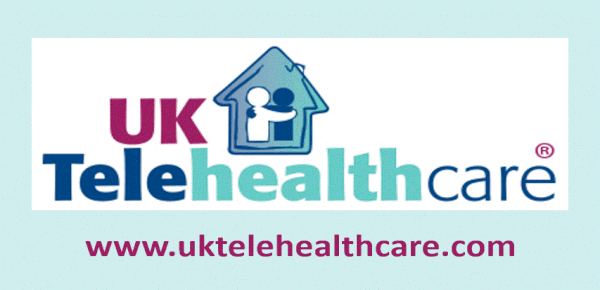 What our UK Readers may have missed on the long bank holiday weekend. And why this matters outside the UK. NHS Digital is being roundly criticized by privacy advocates, the Royal College of GPs (RCGP), the Doctors’ Association UK (DAUK), and individual GP surgeries on plans for creation of the General Practice Data for Planning and Research (GPDPR).
What our UK Readers may have missed on the long bank holiday weekend. And why this matters outside the UK. NHS Digital is being roundly criticized by privacy advocates, the Royal College of GPs (RCGP), the Doctors’ Association UK (DAUK), and individual GP surgeries on plans for creation of the General Practice Data for Planning and Research (GPDPR).
The GPDPR will compile information on 55 million patients–every patient in England registered with a GP surgery–into a database available to academic and commercial third parties for research and planning purposes. NHS has been collecting patient data on patients in a database, the General Practice Extraction Service (GPES), for the past decade. The GPDPR will replace it. Data collection on patients in England starts 1 July. What will be collected is at the end of this article as background.
The objections center on the sensitivity of the data, the short window of notification to patients, the lack of a clearly notified opt-out with sufficient time, and how it will be used.
- The data apparently can include mental and sexual health data, criminal records (!), and other sensitive information.
- The short time–six weeks–between the announcement in late April (a low key affair with Matt Hancock-signed blog posts on the NHS Digital website, YouTube videos, and flyers at GP surgeries), and the start of data collection from the surgeries
- How many patients are actually aware that this is happening and of their options is debatable. (See next two bullets)
- If a patient didn’t pick up on it in the six-week window ending on 23 June (and go to the page with the Type 1 Opt-Out), a patient can opt out for data going forward, but cannot withdraw any data collected into the database prior to that date.
- If a patient is in the National Data Opt-out program, their medical data will be collected anyway, since it applies to only identifiable and confidential patient information.
- Many GPs are concerned about further erosion of the physician-patient relationship and the lack of communication to patients on how the data will be used, the ethical questions around the organizations to which it will be sold, and how patient privacy will be preserved.
The blackest mark here on NHS Digital is that the groups ostensibly involved in the development of the database–the RCGP and the British Medical Association (BMA)–are the ones sounding the alarm, along with the aforementioned DAUK and privacy groups such as MedConfidential and Foxglove. There is also a rebellion starting among London GPs. Reportedly, 36 doctors’ surgeries in Tower Hamlets, east London, will withhold data. An email is circulating to about 100 surgeries in north London questioning the legitimacy of the NHS data collection. This is despite penalties if they don’t submit.
Why does this matter if you’re not in England? Medical data–collecting, manipulating it, connecting it, finding insights, and selling it–is the Gold Rush of the 2020s. Pharma and payers as markets are just the start. Nearly every Roundup or deal this Editor covers has companies with a chunk of this gold rush. Why are telehealth companies worth their IPO/SPAC/funding prices? Why is McKesson ‘big banging’ four separate businesses into one division? Why do we follow ‘data warehouses’ like Sensyne [TTA 26 May], Mayo Clinic’s big bet on a multi-line Remote Diagnostics and Management Platform [TTA 23 Apr], and virtual pharmacies like Capsule? Why are insurtechs like Oscar and Bright Health hot? Why is it the #1 target of hackers?
It’s not altruistic. Services can be duplicated. Companies can be a hair away from failure. But ah, their data…the data has huge market value, even if its potential is not fully understood yet. Ask any data analytics person. Ask China, probably the most aggressive nation in collecting the health and personal data of its citizens, with Chinese capital for years now leading investment in global health tech companies.
In an article back in October 2015, this Editor described the many ways that deidentified patient data, in this case genomic data, can be identified by researchers through cross-checking via research database “beacons”, a network of servers. Referring to the 23andme and Ancestry.com collection of innocently given genomic data from consumers, this Editor proposed a Genomic Bill of Rights in 2018 and again in 2020. If this Editor, no data geek, can deduce it (hat tip to Toni Bunting back in 2015), this information has to be well known to researchers and to privacy advocates.
The controversy is just starting to ramp up. And it should. It’s about time there was a reckoning. The Guardian 30 May, 1 June
More background. According to the NHS Digital page on the GPDPR, patients will be anonymized by a process where de-identification software will replace their NHS Number, date of birth, and full postcode with unique codes produced by de-identification software. The data collected from GPs in England starting 1 July will be on: (more…)
 Two acquisition prospects, Headspace and Ginger, decided to beat the heat and merge. The two companies, currently headquartered in Santa Monica and San Francisco, will combine into Headspace Health. From the context of the release, the Ginger brand will be sunsetting. The merger is expected to close in Q4 subject to the usual regulatory and financial approvals. Financial terms were not disclosed. The combined company claims a valuation of $3 billion.
Two acquisition prospects, Headspace and Ginger, decided to beat the heat and merge. The two companies, currently headquartered in Santa Monica and San Francisco, will combine into Headspace Health. From the context of the release, the Ginger brand will be sunsetting. The merger is expected to close in Q4 subject to the usual regulatory and financial approvals. Financial terms were not disclosed. The combined company claims a valuation of $3 billion.












Most Recent Comments